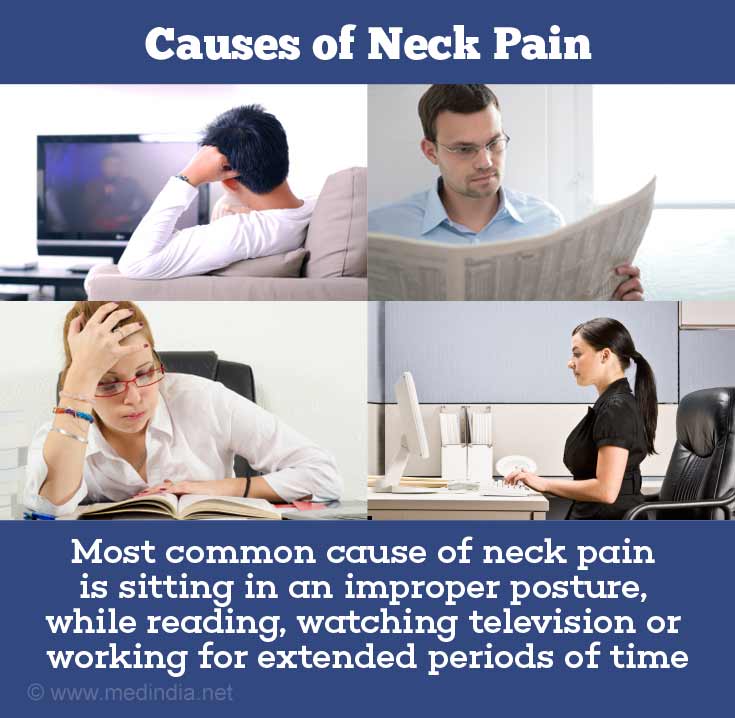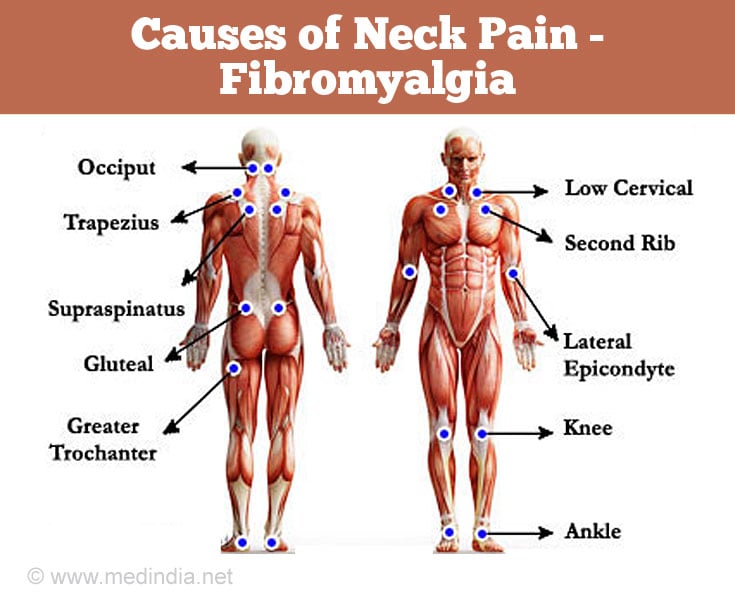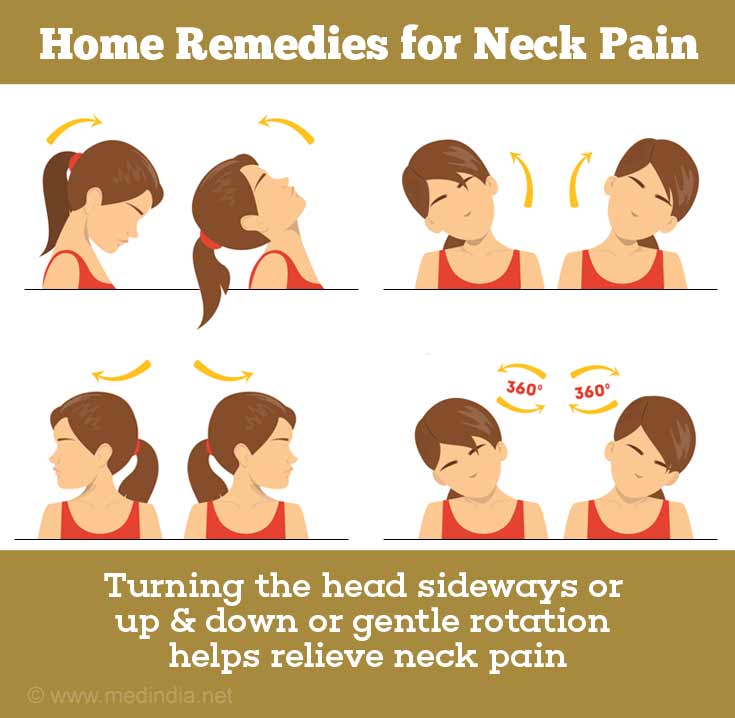What is Neck Pain?
Neck pain is a result of strain either to the neck muscles, bones, the disks between bones, or to the nerves. Neck muscles get strained due to incorrect posture while sitting or working with the computer or at a workbench.
Certain diseases predispose an individual to neck pain. Certain physical activities or accidents can also cause neck pain. Neck pain, in general, does not signify any harmful condition. However, one must see a doctor if neck pain results in numbness in hands or shooting pain in arms.
Causes of Neck Pain
There are several causes of neck pain. Some of them are as follows:
Muscle strain: As mentioned above, most individuals suffer stiffness and pain in the neck, while working for long hours on a computer. Sitting in an improper posture, while reading, watching television or working for extended periods of time, is the most common cause of neck pain. Neck muscles may get twisted while exercising or moving in a sudden manner. These muscles can also get strained on sleeping in thea wrong position.

Arthritis: Spondylosis or cervical arthritis causes stiffness and pain in the neck. Spondylosis results from the wear and tear of spine. There are wear and tear in the joints of spine as well as the disks between the vertebrae of the neck. The wear and tear increase with age; it is common in individuals who are actively involved in sports.
Sprains and Fractures: Neck pain can result from a sprain to the neck. Sudden movements involving the neck may develop pain. Neck pain is also a result of injuries and accidents such as injury to the blood vessels, paralysis, whiplash, and fractures in the vertebrae. Osteoporosis also causes fractures in the neck. When the discs between the vertebrae of the neck are ruptured, an individual experiences neck pain due to undue pressure on the nerves of the spinal column.
Fibromyalgia: Patients with fibromyalgia are plagued with pain in their muscles, joints, and tendons, among others. Neck pain is one of the symptoms of fibromyalgia.

Spinal Stenosis: When the spinal canal narrows, there is pain in the neck. Similarly, infections in the spine (e.g. discitis, osteomyelitis) result in neck pain.
Cancer: When the spine is affected by cancer, an individual develops neck pain.
Other conditions that predispose an individual to neck pain are meningitis and rheumatoid arthritis.
Home Remedies for Neck Pain
Cold or Warm Packs: For minor neck pain, one can apply a cold pack for the first 48 to 72 hours. Following cold treatment, one can apply warm packs or use hot showers to continue treating the pain.
Pain Relief Medications: Medications like acetaminophen may be used to reduce the inflammation in the neck. Painkillers, especially ones like ibuprofen, should not be overused since they may lead to stomach and duodenal ulcers.
Exercises: Turning the head sideways or up and down or gentle rotation helps in exercising the neck muscles

Weights: A medical professional or a physical therapist may use weights to stretch the neck muscles and immobilize them. This results in immediate relief of pain. This method is also known as traction.
Traditional Chinese Medicine: Patients frequently use complementary and alternative medicine (CAM), as an alternative to conventional therapy. Patients may take ginseng or vitamins, and even visit a chiropractor to alleviate the symptoms of neck pain. Alternative therapy is a preferred option due to lower costs and fewer side effects. Chiropractic treatments explore the range of movement of the affected joint in question. It is important to know that chiropractic neck manipulations are feared to increase the individual’s risk of getting a stroke (probably due to damage to blood vessels). Studies that link them to stroke are not conclusive though.
Acupuncture is a common form of treating neck pain. The method is based on inserting needles at specific pressure points to restore the energy level of the body. Although many individuals experience a difference in pain, it is still not scientifically proven. The difference observed in patients may be a placebo effect. Another alternative complementary therapy is Gua Sha therapy, which has been shown to be effective in ameliorating neck pain. Further clinical research data are required to confirm this result. Patients undergoing Gua Sha treatment experienced a reduction in neck pain after just one session.

Massage Therapy: A gentle massage will soothe the neck muscles. It has been shown through scientific research trials that massage therapy has a moderate effect on immediately relieving neck pain.
Transcutaneous Electrical Nerve Stimulation: The individual is treated with small, short electrical impulses to relieve the neck pain. Electrodes are placed near the area of pain.
Consult a Physician: If an individual wants to use a neck collar to relieve the pain, a doctor should be consulted. Long-term use of a neck collar may result in weakening of neck muscles. If the individual has a fever and the neck is stiff with pain, then a physician needs to be consulted. If the individual is unable to bend the neck due to fever, the physician will assess the individual for possible meningitis.

Take a break: On developing pain, the individual should take a break from any physical activity, until there is a reduction in the neck pain.
Corticosteroid Injections: Doctors may inject steroids in the muscles or bones or nerve roots to alleviate pain.
Surgery: Neck pain does not require surgical intervention unless there is pressure on the nerves of the spinal column.










